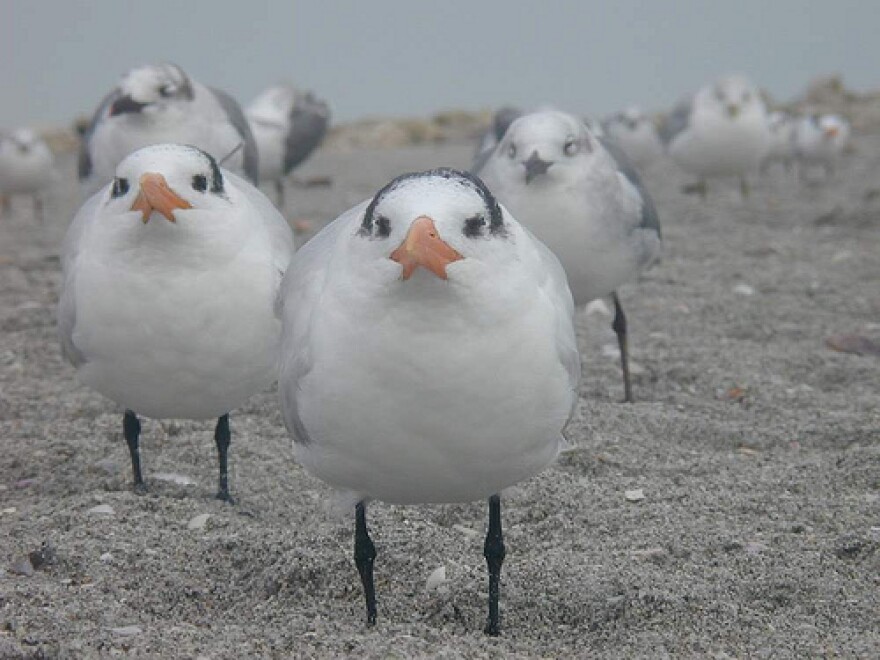Humans aren't the only species facing an uncertain future in South Florida should current sea level rise predictions prove accurate. Migratory and resident shore birds also would feel the pinch of encroaching salt water, beach erosion, and shore line and habitat loss.
When examining current land modeling and other scientific data, in addition to physical evidence, "It becomes clear what a substantial threat sea level rise will be," said Julie Wraithmell, director of Wildlife Conservation, Florida, for the National Audubon Society.
RELATED: 2 Million Floridians Threatened By Sea Level Rise, But New Study Says It Can Be Slowed
RELATED: Interactive Maps Paint A Picture Of Sea Level Rise In Florida
Wraithmell said sea level rise and related land loss is a particular threat in areas where the "coastal habitat doesn't have space or time" to migrate inland.
Habitat migration occurs when one type of natural environment gradually replaces another. In a situation where advancing waters would outpace a "natural" transition, coastal plants and animals, such as threatened and endangered shore birds, would be left without suitable habitat. Meanwhile, inland habitats would be similarly displaced and disrupted.
A recent study conducted halfway around the world suggests grim consequences if sea level rise patterns hold steady in Australia, Asia, and along Alaska's shore. Scientists with the National Environmental Research Programme in Australia looked at the impact of sea level rise on migratory shore birds that use the East Asian-Australian flyway. According to Phys.org, the findings of the Australian study showed that "millions of birds that stop at coastal wetlands during annual migrations could die as rising sea levels and land reclamation wipe out their feeding grounds."
While past studies have peripherally explored sea level rise's impact on shore birds in South Florida, Wraithmell said more current scientific modeling has yet to be released in a final form. For now, conservationalists and other scientists must go with what they know.
Looking specifically at South Florida, Wraithmell said sea level rise would be a special concern because "so much of the coastline has (already) critically eroded." (Read more about beach erosion in South Florida.) While this has made South Florida a less popular site for nesting shore birds, the region remains an important stop for migrating shore birds. When birds lose habitat along a migration route, the results can be critical.
Likewise, Wraithmell said sea level rise in the Florida Keys -- another crucial stop on the Atlantic flyway -- is facing a similarly "dire prognosis," particularly given the Keys' significance to both resident and migratory birds.
While scientists and political leaders explore ways to slow sea level rise on a global and regional front, conservationalists in South Florida will likely need to think outside of the box when aiding displaced species. As an example of adaptive planning, Wraithmell mentioned the use of gravel-topped "life rafts" to provide nesting habitat for least terns, whose beach habitat has dwindled in recent years. The plan was effective in Fort De Soto, where scientists constructed floating gravel habitats to protect least tern nestlings from rising tides and predators, according to a story from Gannett.
Wraithmell acknowledged that such approaches won't work across the board, but said it's an example of the "creative solutions" needed to address a growing problem.
"We need to be strategic about it," Wraithmell said of conservation planning, particularly when it comes to planning a "retreat corridor" for vulnerable coastal species threatened by sea level rise. "We need to look at where (habitat) retreat is possible."






